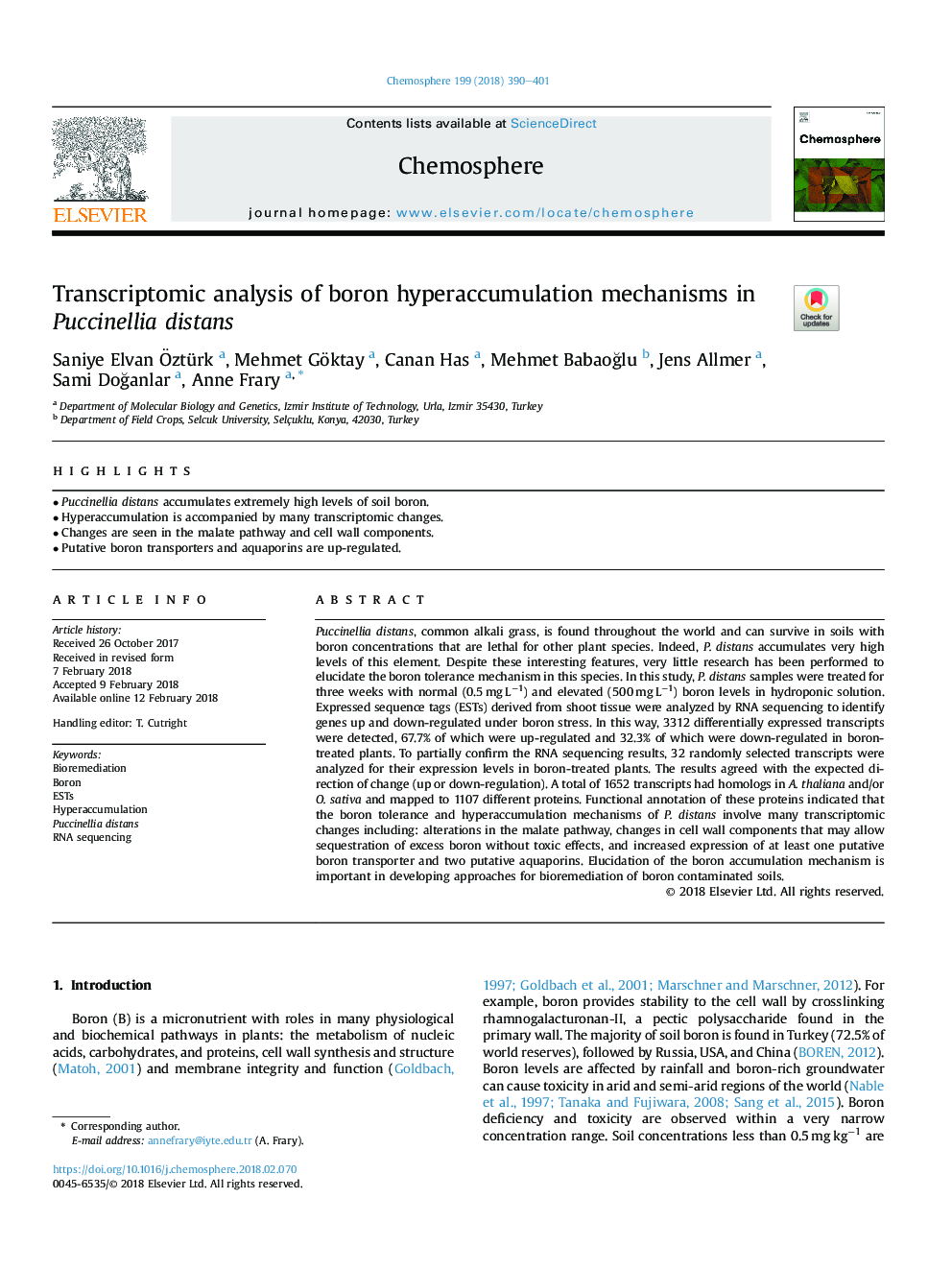| Article ID | Journal | Published Year | Pages | File Type |
|---|---|---|---|---|
| 8851839 | Chemosphere | 2018 | 12 Pages |
Abstract
Puccinellia distans, common alkali grass, is found throughout the world and can survive in soils with boron concentrations that are lethal for other plant species. Indeed, P. distans accumulates very high levels of this element. Despite these interesting features, very little research has been performed to elucidate the boron tolerance mechanism in this species. In this study, P. distans samples were treated for three weeks with normal (0.5â¯mgâ¯Lâ1) and elevated (500â¯mgâ¯Lâ1) boron levels in hydroponic solution. Expressed sequence tags (ESTs) derived from shoot tissue were analyzed by RNA sequencing to identify genes up and down-regulated under boron stress. In this way, 3312 differentially expressed transcripts were detected, 67.7% of which were up-regulated and 32.3% of which were down-regulated in boron-treated plants. To partially confirm the RNA sequencing results, 32 randomly selected transcripts were analyzed for their expression levels in boron-treated plants. The results agreed with the expected direction of change (up or down-regulation). A total of 1652 transcripts had homologs in A. thaliana and/or O. sativa and mapped to 1107 different proteins. Functional annotation of these proteins indicated that the boron tolerance and hyperaccumulation mechanisms of P. distans involve many transcriptomic changes including: alterations in the malate pathway, changes in cell wall components that may allow sequestration of excess boron without toxic effects, and increased expression of at least one putative boron transporter and two putative aquaporins. Elucidation of the boron accumulation mechanism is important in developing approaches for bioremediation of boron contaminated soils.
Related Topics
Life Sciences
Environmental Science
Environmental Chemistry
Authors
Saniye Elvan Ãztürk, Mehmet Göktay, Canan Has, Mehmet BabaoÄlu, Jens Allmer, Sami DoÄanlar, Anne Frary,
